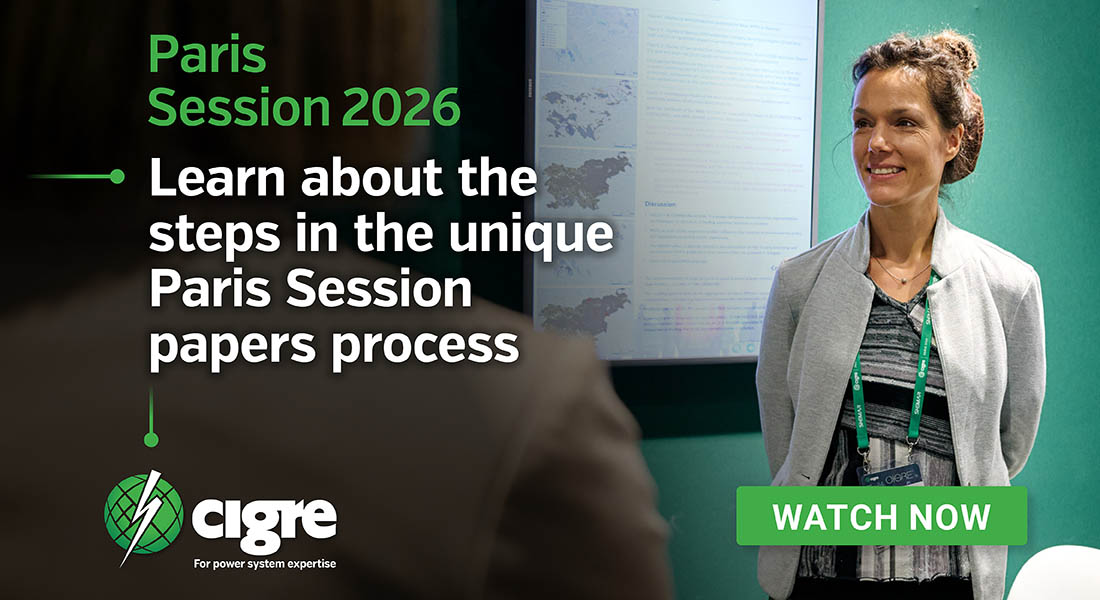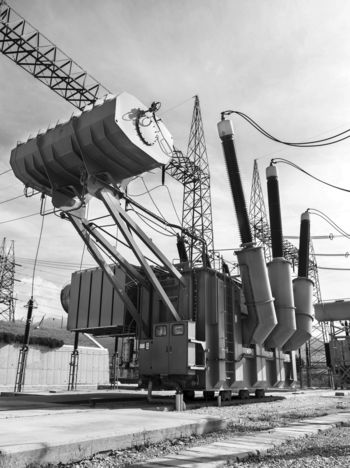Interoperability in HVDC systems based on partially open software
HVDC transmission technology is rapidly getting more prevalent in many parts of the world, driven by the need to integrate more renewable energy sources into the power grid. This increases the risk of adverse interactions between converters or other HVDC equipment located close to each other in the grid. Currently, the converter control and protection systems, including their software, are proprietary to the converter vendor and usually black-boxed, meaning only the vendor can inspect and modify them. This makes it challenging to achieve interoperability in a multi-vendor system where pieces of equipment from different vendors should function correctly together in the same network.
Members
Convenor
(SE)
S. NORRGA
Secretary
(DE)
I. JAHN
WP Leaders
R. ALVAREZ (DE), G. CHAFFEY (BE), V. CHHIBBAR (US), E. PRIETO (ES), O. DESPOUYS (FR), P. HOFBAUER (UK)
A. AGBEMUKO (BE), G. LI (CH), X. LI (CH), P. BRIFF (UK), F. LOKU (DE), M. NAHALPARVARI (SE), L. CHEDOT (FR), F. PAGE (JP), I. COWAN (UK), C. RATHKE (DE), P. RAULT (FR), P. DÜLLMANN (DE), R.ROGERSTEN (SE), Y.J. HÄFNER (SE), K. SHARIFABADI (NO), M. STUMPE (DE), M. HOFFMANN (DE), L. VACIRCAY (UK), E. KILANDER (SE), H. WU (DK), A. KOLIWAD (US), W. ZIAD EL-KHATIB (DK)
Furthermore, there is currently a strong desire to start building multi-terminal HVDC systems, where several converters are linked on the DC side, most likely via DC circuit breakers for protection. This can potentially offer great savings in terms of converter cost, footprint and power losses. However, the need to achieve interoperability is increased since the converters need to function together correctly also on the DC side. Several activities are ongoing to promote interoperability in multi-vendor HVDC systems. One important example is the division of HVDC systems into functional elements and the definition of associated functional requirements. Another is the ongoing development of methodologies and contractual frameworks for the exchange of simulation models of different levels of abstraction. The work behind this technical brochure adds a further dimension to efforts aimed at enabling HVDC multi-vendor interoperability. We propose to make the upper-level parts of the control and protection systems of HVDC equipment available for inspection and modification to a wider group of stakeholders. By upper-level parts are here meant the parts that has the greatest influence on the external behavior, such as power and voltage control. These parts are generally more generic and less IP-sensitive in nature than the lower-level hardware-near controls. Several benefits can be reaped, both by HVDC users and vendors, by such a partial opening of the control and protection systems. The process of achieving interoperability is greatly simplified if all relevant stakeholders have access to the relevant software elements. Furthermore, later expansion of an HVDC system, possibly involving other equipment vendors than the original ones, is simplified. There is also less risk for vendor lock-in if the control software is not all black-boxed.
Initially, as a basis for the analysis of increased openness in HVDC, a thorough review of generic HVDC control and protection methods and algorithms is made, without reference to vendor implementations. The relevant IEC and CIGRE documents relating to HVDC control were first reviewed and compared, along with a discussion of key academic papers in the field of VSC HVDC control. The control functions are then systematically analyzed by dividing them into hierarchical levels: pole/bipole, converter, and valve. Representative algorithms at each level are described in a more detailed but still simplified way. At each level, the aspects of control, operating limits, and protection is discussed. Notably, in an actual implementation of a HVDC control system, not only the control algorithms as such are of importance, but also the limitations of their operating range and the internal protection schemes are critical. Thereby, a solid ground is formed for further analysis of how HVDC control software can be split into open and closed parts.

A partial opening of the upper-level control and protection obviously requires that a split is made somewhere to define the closed and open parts. Three different approaches have been studied for finding this optimal cut. First, a discussion-based approach capturing the engineering experience and intuition of the HVDC community was investigated by meetings among the working group members aiming to find the value of openness versus the importance of proprietary solutions. In addition, two methods that can facilitate optimal sectioning on a more technical basis have been evaluated: model-based systems engineering (MBSE) and graph theory. Both were analyzed with some illustrative examples relating to HVDC C&P systems. Both were found to be fit for the purpose, although more work will be required to further ascertain their applicability to actual HVDC projects.
Furthermore, the practical and management aspects of a transition to partially open HVDC control and protection systems in multi-vendor (and multi-terminal) setting have been investigated. First, a review of different existing vendor implementations of HVDC control and protection illustrates some practical aspects that have to be considered in multi-vendor setups. Furthermore, the functional division and interfaces in multi-vendor and multi-terminal systems is discussed using an example focusing on protection, including some aspects of information sharing during design and expansion. Managing these aspects requires collaboration and a platform for co-creation, as well as an integrator whose role and characteristics are presented. Finally, implementation guidelines for a stepwise introduction of partially open software are also provided.
Any development efforts in the HVDC industry need to consider applicable legal and regulatory aspects. Notably, many of the HVDC users are regulated entities, such as transmission system operators, and for these, the procurement and operation of equipment have to follow certain rules. In addition, many HVDC customers are government bodies, meaning that rules for public procurement need to be observed. Furthermore, competition and anti-trust legislation play an important role in the HVDC industry, given that the market for HVDC equipment is dominated by a few large vendors. A survey among legal and compliance experts from both HVDC equipment vendors and TSOs was carried out to clarify these matters. It was concluded that the proposed methodology based on partially open control and protection systems is most likely not hindered by the existing legislation and regulatory regimes. However, a more detailed investigation will be required in each real case by qualified experts. Finally, the changes to the contractual agreements to be closed between the vendors, users, and other parties in a multi-vendor project have been considered.
To achieve interoperability in multi-vendor HVDC systems, proper testing and verification methodology needs to be at hand. A transition to partially open control and protection systems would greatly simplify and improve the work since a wider group of stakeholders would have access to the actual control and protection definitions. A thorough review of the state of the art in testing and verification in HVDC systems, with a focus on multi-vendor systems, is first provided. Several conclusions can be drawn concerning the changes required for a paradigm using partially open control and protection systems. First, the system split determines testing routines and responsibilities, as well as (potentially sensitive) data to be shared. Furthermore, preferably a system integrator needs to be appointed to be in charge of coordinating all tests by different parties, whereas the party most involved in a specific test shall lead that test. A responsibility matrix is proposed for determining how to split the testing responsibilities among the parties. It is also clear that a global version tracking system (available to all parties) needs to be available to handle changes occurring as a result of the testing process.
As mentioned, several efforts are currently ongoing to promote multi-vendor HVDC system interoperability. Many aspects, such as the organization of projects and the roles and responsibilities of the different involved parties, will need to be addressed by all of these. Partially open HVDC control and protection is a new field that had not been investigated prior to the start of this work. Therefore, the aspects presented here are a first iteration on a new and contentious topic but are hopefully useful for other efforts toward interoperability. The current rapid expansion of HVDC technology worldwide means the HVDC community is challenged by a heavy workload and simultaneous staff scarcity. Therefore, any multi-vendor HVDC solution should be devised to help make HVDC projects more efficient or, in any case, not cause added workload. The studies carried out clearly show that the partially-open control and protection concept can be such a solution.




